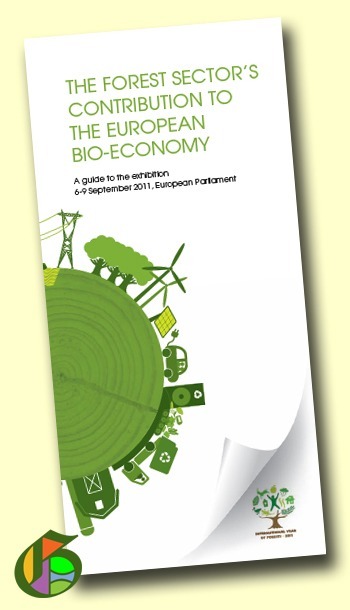A couple of weeks ago I attended an exhibition at the European Parliament in Brussels, outlining the forest sector’s contribution to the European bio-economy. Bio-economy is a concept that extends well beyond biofuels, where many are currently focussing innovation and investment. Instead, think of completely new sectors, using new materials, for new markets.
Foresight
The exhibition provided a fascinating insight into the future role of the forest sector in many unexpected forms. Although this was a celebration of the potential for the forest sector, a stark futurologist’s view during an accompanying workshop by Dr. Petri Vasara, of Pöyry Management Consulting Oy, highlighted that:
“without innovation and collaboration, food use will eat the bioeconomy before it is born.”
Vasara argued that without the forest sector, there would be no true bioeconomy, especially in the shadow of looming political and food crises. His view was that the forest sector is already a part of many new growing bio-based industries of importance to Europe and that the scope of possibilities for forest-based products in the bioeconomy is second to none. The connected chain land-food-agriculture-silviculture-recycling-waste-water-metals will shake the world, and the forest sector is in a key position.
Bioeconomy
Here are some examples of the emerging technologies and innovation that make up the bioeconomy in Europe.
- Anti wifi wall paper and hydrophobic paper
- Innovation with cork
- Packaging for foods and drinks
- Fractionisation of wood fibre in cellulose, lignin and hemi-cellulose allows more diverse manufacture: e.g. lipstick
- Structural and insulation use in building
- DuraPulp
- Uniclic furniture
- Innovation in MDF construction and use
- Heat sensitive cups
- Lignin-based food flavouring
- Paper battery
- Preceramic paper
Download the guide to the exhibition …

Gabriel Hemery
 This work is licensed under a Creative Commons Attribution- NonCommercial- NoDerivs 3.0 United States License.
This work is licensed under a Creative Commons Attribution- NonCommercial- NoDerivs 3.0 United States License.
